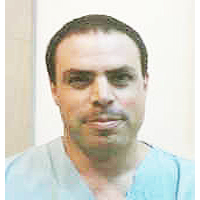Idiopathic ascites following caesarean section: A case report
Published on: 1st November, 2022
Ms X is a 40-year-old gravida 12, para 2+9 woman, who was admitted for an elective caesarean section at 38 weeks gestation following the previous two caesarean sections. Ms X had abdominal distension and generalised abdominal tenderness in the postoperative period. On investigation, she was found to have an elevated white cell count (WCC), C - Reactive Protein (CRP) and creatinine with free fluid in the abdomen on imaging but there was no evidence of perforation of any visceral organ. Ms X was treated conservatively for sepsis, an Acute Kidney Injury (AKI) and post-operative ileus and her symptoms gradually resolved. This is a case of idiopathic ascites post caesarean delivery with no clear cause.
Early Outcomes of a Next-Generation Balloon-Expandable Transcatheter Heart Valve - The Myval System: A Single-Center Experience From Serbia
Published on: 26th June, 2023
Transcatheter aortic valve implantation (TAVI) is one of the most effective treatments for severe aortic valve stenosis (AVS). Different genres and generations of transcatheter heart valves (THVs) are accessible, offering operators an opportunity to choose a patient-tailored device. In this single-center study, we present the outcomes of Serbian patients treated with next-generation Myval THV for severe symptomatic AVS. Myval THV was implanted in all consecutive patients who underwent TAVI at the Dedinje Cardiovascular Institute of Belgrade, Serbia between October 2020 and September 2021. The primary endpoint was device success on day 30. Secondary endpoints included 30-day all-cause mortality, cardiovascular death, stroke, moderate/severe paravalvular leak (PVL), and new permanent pacemaker implantation (PPI). TAVI was performed as per the European Society of Cardiology guidelines. The study comprised thirteen patients, aged 72±13 years with mean EuroSCORE (7.17%) and Society of Thoracic Surgeons (2.72%,) scores who underwent TAVI successfully with 92.3% using the percutaneous approach. Myval THV intermediate and extra-large sizes were implanted in 46% and 15% of patients, respectively. This acute procedure success rate was 100%. The primary composite endpoint of early device success was achieved in all patients. None of the patients had clinically significant aortic regurgitation or moderate/severe PVL. No patient experienced stroke, contrast-induced acute kidney injury, device-related vascular complications, or a new PPI. The all-cause mortality rate at 30 days was 0%. Myval THV system demonstrated a favorable safety/efficacy profile within 30 days post-procedure at a single center in Serbia. This is the first report of my experience with Myval THV from Serbia.
Clinical and Epidemiological Profile of Reversible Acute Kidney Injury with Full Recovery: Experience of a Nephrology Department
Published on: 10th October, 2023
Purpose: Acute kidney injury (AKI) is a real public health problem due to its severity and gravity. In a 2013 meta-analysis, Susantitaphong, et al. estimated the incidence of AKI worldwide at between 10% and 20%. In the latter study, no African studies were included, given the lack of data in the literature. Our objective was to identify the clinical and paraclinical epidemiological characteristics of patients with AKI.Patients and methods: We conducted a retrospective study including patients who had AKI with recovery of normal renal function hospitalized in a nephrology service between 2002 and 2015.Results: Our population consisted of 107 men and 107 women with a median age of 61 years (IQR 43-73.25) of which 42.1% were multitargeted. Functional AKI represented the predominant mechanism of AKI retained in our study with a rate of 53.2% with dehydration as the main etiology for 108 patients (50.46%). Organic cause was retained in 38.8% of patients, with acute tubular necrosis (ATN) as the most frequent etiology (37.35%). Kidney disease improving global outcomes (KDIGO) stage 3 was the stage retained for 115 patients included in our series, 31 of whom required extra renal purification. During their hospitalization, 78.5% of the patients presented a persistent AKI (duration of the episode > 7 days). A glomerular filtration rate (GFR) lower than 60 ml/min/1.73 m² at discharge was found in 119 patients and 10 patients had a GFR higher than 90 ml/min/1.73 m². After 3 months from discharge, 77.5% of patients had a GFR between 60 and 90 ml/min/1.73 m².Conclusion: Our results give us an idea of the epidemiological and clinical characteristics of patients who have had acute renal failure with recovery of normal renal function and enable us to better recognize patients at risk in order to avoid such complications. AKI remains a major issue and knowing its epidemiological and clinical characteristics will allow its prevention.
Acyclovir Induced Acute Kidney Injury: A Case Report
Published on: 13th February, 2024
Herpes zoster ophthalmicus, commonly referred to as shingles, manifests as a painful skin rash affecting one or more dermatome distributions of the trigeminal nerve, which supplies sensory innervation to the eye and its surrounding structures. Acyclovir stands as the primary pharmacological intervention for the treatment of this condition. However, its administration is associated with a notable risk of adverse effects, with acute kidney injury being the most prevalent. Herein, we present a case report involving a 59-year-old female patient who developed acute kidney injury after the prescription of Acyclovir for the management of herpes zoster ophthalmicus. This case underscores the importance of vigilance regarding potential renal complications associated with Acyclovir therapy, particularly in susceptible patient populations.
Efficiency, Effectiveness and Clinical Results of Extracorporeal Therapies in Non-Renal Settings: How are they to be evaluated? The Case of their Application in Liver Failure
Published on: 20th February, 2024
There are various Extra Blood Purification Therapies (EBPTs) used in the context of critical care, including but not limited to Acute Kidney Injury (AKI). These therapies aim to remove toxins, inflammatory mediators, and excess fluids from the bloodstream. While some blood purification therapies were initially developed for renal support, they have been explored for use in other medical conditions as well, including liver pathologies and sepsis. Here is a brief explanation of some therapies such as MARS (Molecular Adsorbents Recirculating System), Prometheus, CPFA (Coupled Plasma Filtration Adsorption), PAP (Plasma Adsorption), and SPAD (Single-Pass Albumin Dialysis). Some of these therapies have entered clinical use, while others have faced challenges, such as negative evidence, poor purifying efficacy, or difficulties in practical use. The field of extracorporeal liver support is dynamic, with ongoing developments aimed at improving the effectiveness and practicality of these therapies. Sorbents mark the latest frontiers in blood purification to remove various toxic molecules, with specific emphasis on the modulation of bilirubin and other substances in critically ill patients suffering from liver failure. In the above-mentioned pathologies, substances may be continuously generated within the body, and Mass Balance is the only valuable tool for distinguishing between generation and removal processes. The effectiveness of sorbents in removing bilirubin and bile acids, as demonstrated in both in vitro and in vivo studies, distinguishes them and shows their superiority over traditional liver cleansing methods, such as CPFA, PAP, SPAD, Prometheus, and MARS.
Unmasking Renal Complications of Immunotherapy: A Case of Nivolumab-induced FSGS
Published on: 7th February, 2025
Immune Checkpoint Inhibitors (ICPIs), while revolutionizing cancer therapy through potentiation of anti-tumour responses via targeted blockade of T-lymphocyte inhibitory receptors, are associated with immune-related adverse events (irAEs), including diverse renal manifestations. This report presents a case of a 69-year-old male with urothelial carcinoma who developed Acute Kidney Injury (AKI) and nephrotic-range proteinuria following initiation of nivolumab, an anti-PD1 antibody, necessitating renal biopsy to clarify the aetiology. The biopsy revealed Focal Segmental Glomerulosclerosis (FSGS) with endotheliopathy, suggesting a direct ICPI-induced glomerular injury. This case underscores the need for heightened awareness of ICPI-associated glomerular disease, alongside more common renal adverse events such as Acute Interstitial Nephritis (AIN), and for the need for renal biopsy in such cases. While the incidence of ICPI-associated AKI is approximately 17%, and AIN is a more frequent finding, FSGS and other glomerular pathologies should also be considered. Current treatment for such renal events involves discontinuation of the ICPI agent and initiation of immunosuppression with glucocorticoids. The management of these cases requires prompt detection, timely diagnosis, and often interdisciplinary collaboration, thus highlighting the need for more case reports, research, and better treatment strategies.
















